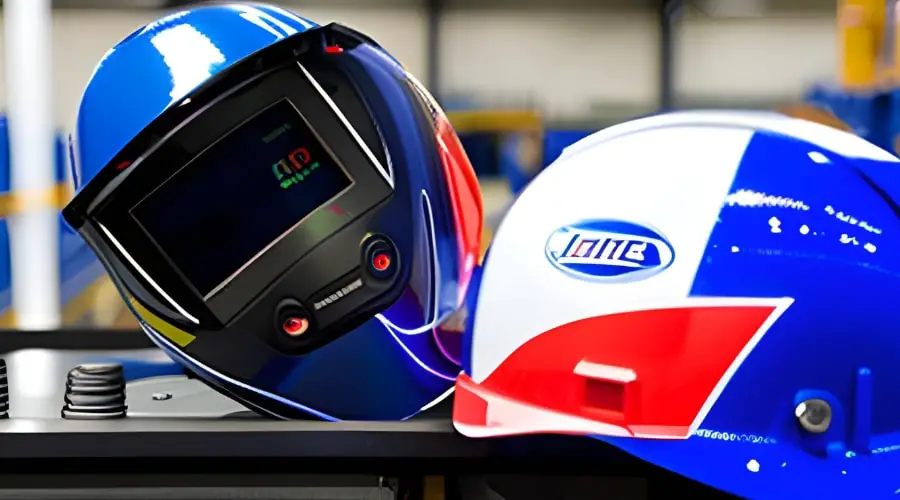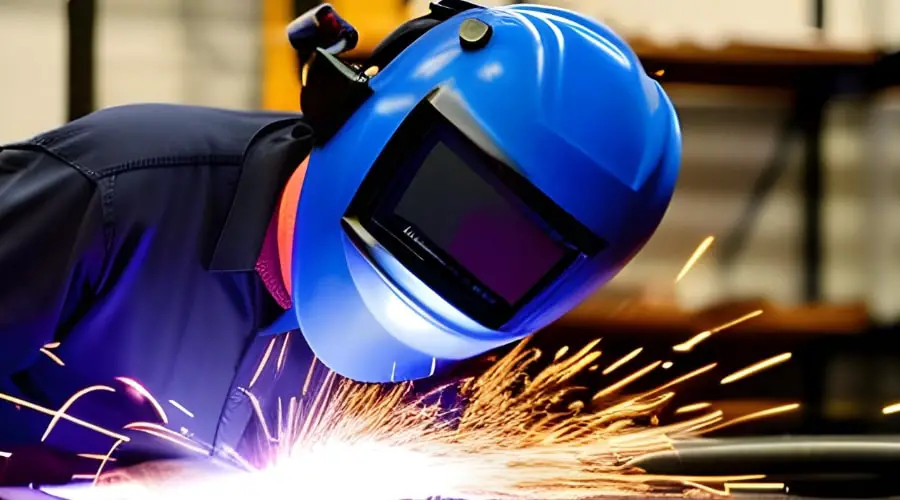Welding helmets have come a long way since their inception, and one of the most significant advancements is the auto-darkening feature. But why are the correct settings so important?

The Importance of Proper Helmet Settings
Imagine you’re mid-weld, and suddenly, your helmet darkens too much or too little. That’s not just inconvenient—it could be dangerous. Proper helmet settings ensure your safety and improve the quality of your welding work.
Understanding Auto-darkening Welding Helmets
Before we dive into the nitty-gritty of the settings, it’s essential to understand how auto-darkening welding helmets function.
How Auto-darkening Welding Helmets Work
Auto-darkening welding helmets use sensors and liquid crystal displays (LCDs) to adjust the helmet lens’s darkness, protecting your eyes from harmful light emissions.
The Role of Sensors in Auto-darkening Helmets
The sensors on these helmets detect the light emitted from the welding arc, triggering the LCD to darken within milliseconds. The number of sensors can vary between helmets, impacting the helmet’s performance and reliability.
The Right Settings for Your Welding Helmet
Now, let’s delve into the different settings you must understand to use your auto-darkening welding helmet optimally.
Shade Numbers: What They Mean
Shade numbers determine the darkness of the lens. Lower numbers mean lighter shades, suitable for low-intensity welding, while higher numbers are best for high-intensity welding.
The Impact of Amperage on Shade Numbers
The higher the amperage of your welding machine, the higher the shade number should be to protect your eyes adequately.
Sensitivity Settings: Getting It Right
Sensitivity settings control the response of the helmet to the welding arc. The correct sensitivity setting is crucial, especially in environments with varying light conditions.
The Effect of Ambient Light
You may need to increase sensitivity in brighter settings to ensure the helmet responds appropriately. Conversely, in darker conditions, a lower sensitivity might be more suitable.
Delay Settings: Striking a Balance
The delay setting controls how long the lens stays dark after the welding arc stops. A shorter delay is suitable for quick welds, while a longer delay is better for high-am
Delay Settings: Striking a Balance (continued)
A longer delay is better for high-amperage welding tasks, preventing sudden exposure to the bright light of the still-cooling weld.
Troubleshooting Common Issues
You might encounter issues with your auto-darkening welding helmet, even with the right settings.
Helmet Not Darkening
If your helmet isn’t darkening at all, first check your sensors. Are they clean and unobstructed? If they’re fine, check your shade settings – they might be too low. Lastly, consider the helmet’s power source. If it’s battery-powered, the batteries may need replacing.
Helmet Darkening Too Much
If your helmet darkens too much, your shade settings are likely too high. Try lowering them. If this doesn’t work, your sensors may be overly sensitive and require adjustment.
Maintenance Tips for Your Auto-darkening Welding Helmet
Regular maintenance is key to keeping your auto-darkening welding helmet in optimal condition.
Regular Inspections
Regularly check your helmet for any visible damage. In particular, ensure the sensors are clean and functioning correctly.

Proper Cleaning Techniques
Use a soft cloth to clean your helmet and avoid using harsh chemicals, which could damage the lens or the helmet’s sensitive electronics.
Frequently Asked Questions:
1. What is an auto-darkening welding helmet?
An auto-darkening welding helmet is a protective headgear used in welding tasks. It uses sensors and LCD technology to automatically adjust the darkness of the lens, protecting the wearer’s eyes from harmful light emissions.
2. How does an auto-darkening welding helmet work?
Auto-darkening welding helmets use sensors to detect the light from the welding arc. Once detected, the lens darkens within milliseconds to protect the user’s eyes.
3. What does the shade number mean on a welding helmet?
The shade number on a welding helmet refers to the darkness of the lens. Lower shade numbers are lighter and suitable for low-intensity welding, while higher ones are darker and best for high-intensity welding.
4. Why isn’t my auto-darkening welding helmet darkening?
There could be several reasons if your auto-darkening welding helmet isn’t darkening. Check if the sensors are clean and unobstructed, if your shade settings are appropriate, and if the helmet’s power source works correctly.
5. How do I maintain my auto-darkening welding helmet?
Regular inspections and cleaning are crucial to maintaining your auto-darkening welding helmet. Check for visible damages, ensure the sensors are clean and functioning, and clean the helmet using a soft cloth and mild cleaners.
Conclusion
Understanding your auto-darkening welding helmet’s settings is vital for your safety and your work’s quality. You can make the most of this innovative tool by understanding how these settings work and how to troubleshoot common issues.
Helmetslab is a website that focuses on providing in-depth reviews and information about different types of helmets, including motorcycle helmets and others helmets. I am writing a post with proper research on the info that helps helmet users.

